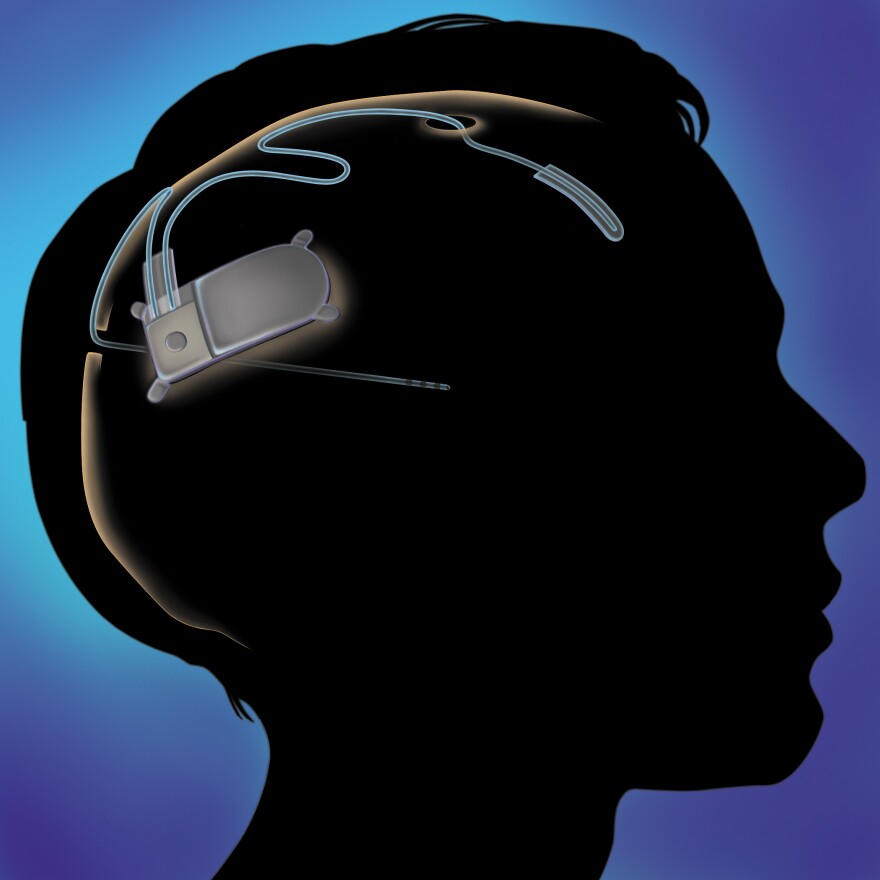Imagine a tiny computer embedded under your scalp that's constantly tracking your brain activity and zapping you when it senses something awry.
That might sound like science fiction, but a medical device that does that was just approved by the Food and Drug Administration as an option for people with epilepsy that's resistant to treatment with drugs.
Seizures happen when groups of neurons fire abnormally. The new device, called the RNS Stimulator, is able to detect these problems in the brain and fire electrical signals through implanted wires to stop a seizure from happening.
Implants to treat neurological problems aren't completely new. They're already being used to treat illnesses such as Parkinson's disease and a condition called dystonia. Neurologists also use another electronic approach called vagal nerve stimulation to treat some forms of epilepsy.
But unlike VNS devices, the RNS Stimulator senses when seizures are about to occur and nips them at the source. The most common problems in clinical tests of the device were infections at the implant site and batteries that ran down too soon.
The device is made , based in Mountain View, Calif. The company says each RNS Stimulation system will cost between $35,000 and $40,000.
We spoke with Dr. Joseph Neimat, a neurologist at the Vanderbilt Medical Center in Nashville, about the approach. Here are highlights from the interview edited for length and clarity.
How big of a deal is this new treatment?
I think this is substantial. This is the first FDA-approved brain implant for epilepsy. And it's also the first implant of any kind that is responsive to brain activity.
Epilepsy medications are very effective in a large portion of the population who have epilepsy. But when those medications fail, particularly if you fail two or more of these medications, the recommendation is then to seek surgery or at least seek evaluation. There remains a significant population where we do these evaluations, and we find that seizure is coming from several different spots or that it's coming from a place that is just necessary — for language or for motor activity — and you can't take it out safely.
What are the options for those patients?
What we've had available to us thus far is vagal nerve stimulation. The NeuroPace device is like that, but it seems to be better. Your typical VNS devices don't know what your brain is doing. They don't record or respond to any of the changes that are taking place that represent the disease we're trying to treat. What the new device does is that it's simultaneously recording from a particular part of the brain and it's sensing when changes occur.
What are the limitations of this device?
It still is not a cure to epilepsy. There's a percentage of patients who are seizure-free with the device, but it's not a large percentage. For the majority of patients it simply reduces seizure numbers.
Do you have any patients who would be candidates for this device?
We have several patients, actually. And we have several patients who have undergone testing to indentify where they have seizures. We've been waiting for the opportunity to treat them with this device.
Copyright 2020 NPR. To see more, visit https://www.npr.org. 9(MDAwMTM1NDgzMDEyMzg2MDcwMzJjODJiYQ004))


